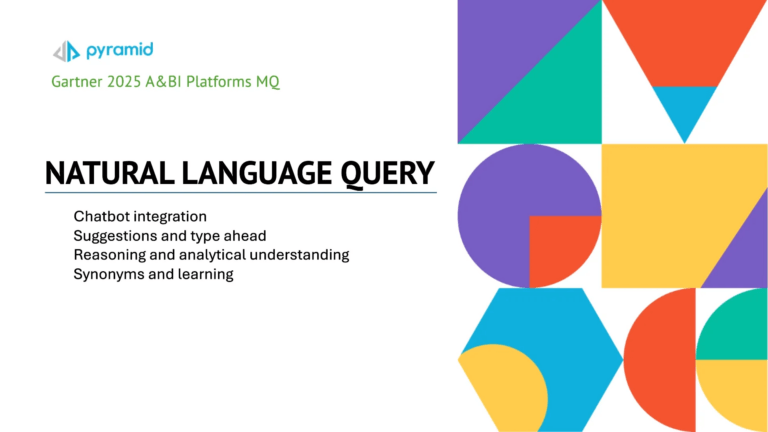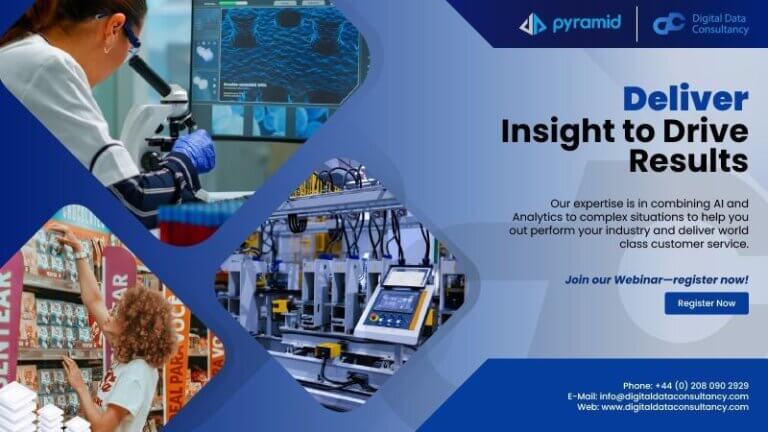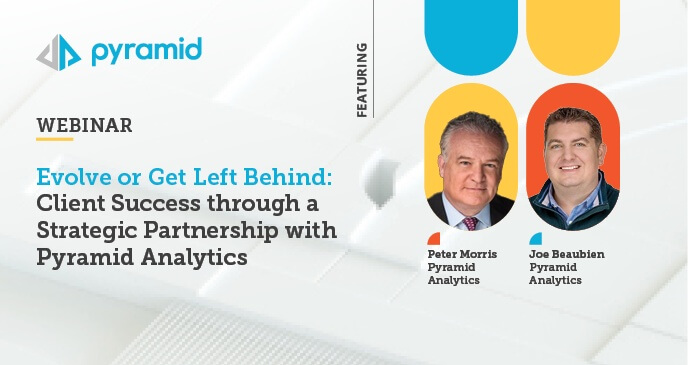Dr. Lorien Pratt came to our joint conference with tech12 and presented the new and growing field of Decision Intelligence (or DI for short).
DI is the technology that will allow everyone to analyze available and fast information. Technology can solve the major problems of the human race and the complex business problems in the commercial world. This technology will become a part of the decision-making process for a third of all the large companies in the economy within a year.
Or as Dr. Pratt puts it: Welcome to the exciting future of the 21st century.
So many of us in our careers are rewarded for knowing what’s next. Whether we’re entrepreneurs, investors, CTOs, CIOs, knowing what’s coming around the corner and the next generation of technology is really important. Hi, I’m going to tell you today about where we’re taking artificial intelligence, data, and analytics to the very next level. This is a new field. It’s called decision intelligence. And it serves kind of a similar purpose to what computer technology did when we took computers out of these hidden rooms and put them in our pockets and on our desks.
So, decision intelligence, you may not believe it, but analytics and A.I. in the 21st century is going to become democratized. We’re all going to be able to use this great technology. It’s not just going to be Facebook and Google, who are experts at A.I. You will be experts at A.I. too. And you’ll do this by using something called decision intelligence. Another great thing about decision intelligence is it has the potential to solve a number of unsolved problems that have never previously been solved: inequality, conflict, Covid, climate, and complex business problems in the commercial world, whether they’re strategic, tactical, or operational. But don’t take my word for it. Decision intelligence is predicted by Information Week to hit a $17 billion market. And Gartner group says decision intelligence will be used by a third of all large organizations by next year. My friend, Cassie Kozyrkov at Google, has trained 20,000 engineers in decision intelligence. So, if you haven’t heard about this new field, it’s time. And welcome to the exciting future in the 21st century.
Now, before I tell you what decision intelligence is, I’m going to tell you a little bit about my own history. I have a machine learning background. I’m known for inventing something called transfer learning. And I delivered lots of machine learning solutions to the human genome project and many other organizations over the years. In 2001, I had the opportunity to start as a market analyst. So, instead of being a technologist, I was now focused on the problem side. And I was honored to interview thousands of people who told me technology should be solving our problems, and it is not solving our problems the way we need it to. So, there’s a gap. There is where A.I. and analytics are used today, and there’s a much bigger space where they could be used. So, I invite you to decision intelligence.
Today, only 20% of insights are used by decision-makers. This is a big opportunity if you’re in technology or even if you’re not in technology. This is the bridge so you can finally talk to your analytics and data people. So, in order to tell you a little bit more about what D.I. is, let me tell you about a previous revolution which is artificial intelligence, and the subfield of A.I. called machine learning which is my background. A.I. was really exciting because it allowed us to program computers in a way we could never program them before. Instead of writing code like, do while and if then, we now give examples of 50,000 pictures of cats, and 50,000 pictures of dogs, feed that to the computer, and it automatically creates software for us. If you don’t know what machine learning is, in a nutshell, that’s what it is. It’s programming computers by examples instead of writing code in Pascal or JavaScript or C or C#. However, machine learning is stopped short of what we need to do if we’re going to solve the hard problems of the world because decision-makers don’t think in terms of labeling cat pictures or even predicting the weather or predicting a stock price going up and down. Decision makers think in terms of the outcomes they wish to achieve. So, I challenge you. Go home, and talk to your family. Say, what decisions are you facing today? And ask them about the outcomes they wish to achieve with those decisions. You guys decided to be here today, or if you’re watching me on television, you decided to turn on the TV, and you haven’t turned it off yet. Thank you very much. And why did you do that? You took that action. You made that choice to be here for some reason. Think about why you are here. Maybe it’s to learn something new. Maybe in your job, if you know something new, you can get a raise. That raise will lead to higher income, and maybe that’ll make you happier. Okay? So, you took an action that led to something and led to something else and ultimately led to some outcome. This is how normal people think. This is how my dog thinks. He sits and gets a cookie. He took an action, it led to an outcome.
But machine learning stops short of talking about actions and outcomes. This is the essence. If you’re asleep, this is the moment to wake up for 10 seconds. Decision intelligence is about getting from actions to outcomes. So, this is a messy picture. And I’m not going to go through it in detail. This is the picture for the technologist in the audience. On the left-hand side, we can see a number of actions we might take if we’re running a building, managing a building, and trying to keep people safe. On the right-hand side are the outcomes. So, we might invest in better air conditioning. We might invest in masks or tell people to wear them. It’s a little bit older slide because we’re not dealing with Covid so much anymore. But you can see there’s a very complex relationship between the actions and the outcomes.
For those of you who are data people or A.I. people, in the middle of the action-to-outcome pathway, that’s where your data fits in. That’s where your machine learning models fit in, and that’s where your statistics fit in. So, this is maybe going to lose a number of you, but for those of you who love details, this is called a causal decision diagram, and it’s the core of how I do decision intelligence. We’re going to skip this one because it’s detailed, but there is a framework that shows all the ways that data can fit into decisions. I think what’s more accessible is this picture which is a simulation. I caught Covid in 2020, very early in the pandemic, and I love to code. So, I wrote this thing up in Unity, and then, ultimately, we took it to market. On the left-hand side, you can see some decisions I might make having to do with social distancing and the number of masks you wear. We run a simulation, agent-based simulation, which is how people move through space, and computational fluid dynamics, which is how the virus particles move through space. We get people sick in simulation, so they don’t have to get sick in reality. Now, this same idea applies to many complex business situations as well as things like Covid or climate or conflict. Let’s run simulations. Let’s democratize and make accessible this great computer power so that we can solve hard problems by integrating machine learning, AI, and analytics.
This is another one I’ll show very briefly. I’m deciding on how much money to give to a charity. And they say that they’ll plant trees for me, and those trees will generate carbon, and my outcome is I’d like to help with climate change. Again, actions that lead to outcomes with data, machine learning, and analytics are in the middle. So, just to kind of recap, what decision intelligence does is it bridges this gap that’s been existing between the data people, the nerds, who don’t know until now how to talk effectively to normal human beings who have decisions, who have stakeholders, and want to make sure that the work they do has a larger benefit. There has been a gap for many years, and any of you who are in this space know how hard it is to communicate to the data scientist if you’re not a technical person and vice versa. Decision intelligence fills that gap by giving us a map.
Okay. A couple of take-home messages. If you want to do-you can do decision intelligence today. Go home. Ask your friends what outcomes you wish to achieve. What actions can you take to achieve those outcomes? Don’t start with the data. The data scientists here are not going to be happy with that, but it’s important, just not at the beginning. Start out by being sure you understand your problem space. Number two, if you have a preexisting investment in analytics in your company, ask yourself how you can maximize the return on investment of that data lake, that database, or that business intelligence platform by focusing on the data you need to support a decision. Again, start with the decision, actions, and outcomes, then fit the data in, and your effort to manage that data will be much smaller. Finally, take an eye on the fast-growing decision intelligence vendor market. As I said, there are a number of vendors exploding in this space, with $17 billion predicted by 2027. And one of my favorite vendors in this space has this great campaign. Pyramid Analytics has “Digital cameras, really? Kodak didn’t use decision intelligence. Online shopping, really? Sears didn’t use decision intelligence.” Kind of funny, but this is really what D.I. is good for. Let’s skip this one just for lack of time.
There is architecture and process stuff and open-source things but let me finish with a quote from Garry Kasparov, who says that future conflicts-and it’s not just conflicts. It’s all kinds of problems that are complex and inner dependent and inner disciplinary, they’ll be won, not by the force with the highest computer power, the best chips, or the best training, but by those who use novel algorithms to augment human decision making”. We’re not fully automating things here. Instead, we’re sitting side by side with computers solving the hardest problems of our time. Thank you so much.





